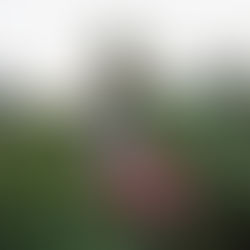
The recent wildfires in California are a reminder it's a good time to clear brush. Fire season has become longer in our state, and the best thing a homeowner can do is have defensible space around their property.
Even if you have not received an inspection notice from the Los Angeles Fire Department, do not assume that you do not need to be in compliance. By being proactive, your property will be safer in the event of a fire. You can look up your property by parcel number with the LAFD Inspection Portal. The Los Angeles Fire Department website has helpful information for property owners who are getting ready to clear brush around their homes. It is very important to follow their advice as clearing brush has often led to fires when done incorrectly.
LAFD BRUSH CLEARANCE SAFETY TIPS: "Remember that when clearing your brush, safety is very important. In recent years many brush fires have started by homeowners attempting to clear their brush. Many times, the sparks produced from metal blades on motorized equipment has started fires.
Always have a water source readily available. A water extinguisher, garden hose or a few buckets of water.
Avoid clearing brush during the peak temperatures of the day, between 11:00 am and 3:00 pm and on days when a Red Flag Alert* has been declared by the Fire Department.
Only use properly maintained motorized equipment and have a spark arrester when required.
Do not refuel motorized equipment while motor is running. Use approved fuel-dispensing containers only.
Always make sure the hot exhaust on any motorized equipment is clear of any vegetation. (grasses, weeds, shrubs)
Do not use metal blades on weed whackers/whips. Use nylon line or plastic blades instead.
Always wear safety glasses and gloves. Hard hats and dust masks are recommended.
* Red Flag weather days refer to certain weather conditions that can cause a wild-land fire to start and to spread rapidly. These conditions generally exist when the winds exceed 25 mph and relative humidity is below 15%."
Pacific Vista Landscape Services is here for you to help protect your home by clearing the brush and doing it safely and correctly. Call us for a quote at 661-222-7525.

Summertime is here and with that can come dry temperatures, high heat, and increased chances of wildfire. In California, this can sometimes mean danger to businesses on the outlying areas of cities. Knowing this, it is important that we properly prepare our surroundings to protect the buildings in which we live and work. Through proper planning, it is possible to have both a beautiful landscape and a fire safe zone around your business or home.
Defensible space levels
When creating a defensible space around your business consider the concept of zoning which can help define what types of landscaping you should use depending on proximity to a building. There are three zones and cover the building itself and 100-200 feet around the structure. In areas across the country where the risk of wildfire is high, this zone, commonly called “the home ignition zone,” can actually extend up to 200 feet.
Zone 1
This first zone is closest to the building, and usually is the structure (including wooden decks, fences, and boardwalks) and will extend beyond the structure by at least 30 feet on all sides. In this area you will want to use the following guidelines:
Plants should be carefully spaced, low-growing and free of resins, oils and waxes that burn easily.
Keep the grass mowed and trees pruned on a regular basis. Note: trees should be pruned up six to ten feet from the ground.
Planting conifer trees, one should ensure there is 30 feet between the tree crowns, and trim back any trees that overhang the house.
Create a fire-free area within five feet of the home using non-flammable landscaping materials and/or high-moisture-content annuals and perennials.
Keep dead vegetation cleared, this includes keeping the area under decking and in gutters clear.
Consider xeriscaping to help with water conservation efforts.
Zone 2
Zone 2 is the area 30-100 feet from the building, plants in this area should be low-growing, well irrigated, and less flammable. In this are use the following tips:
Leave 30 feet between clusters of two or three trees, or 20 feet between individual trees.
Plant a mixture of deciduous and coniferous trees.
Use “fuel breaks”, like driveways, gravel walkways, and lawns.
As in zone 1, prune trees up six to ten feet from the ground.
Zone 3
Zone three is 100 to 200 feet from the building and this area should be thinned, however less space is required than in Zone 2. Do keep in mind though, other factors like topography, the recommended distances to compensate for radiant heat exposure actually extend between 100 to 200 feet from a building – on a site-specific basis. In zone 3 you will want to do the following:
Remove smaller conifers that are growing between taller trees.
Remove heavy accumulation of woody debris.
Reduce the density of tall trees so canopies are not touching.
Selective Planting
Let us help
Pacific Vista Commercial Landscaping Services is knowledgeable in different types of landscaping and can help you create a fire-defensible space around your business. Whether planting colorful bushes and flowers, xeriscaping, or picking trees, we can help. We can help you select the type of plants that will work well in your environment. We can guide selection to provide beautiful landscaping while choosing drought tolerant and fire safe plants that can make any property sing. We can also create a custom landscape for your new building or home, or help redesign and help make the space around an existing building or home safe from potential wildfire. Whatever the need, give us a call!













































